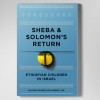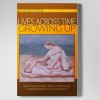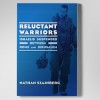First thing being first, before replacing the sloughed skin on Mrs. R’s arm, I had to find out why
her forearm was raw to the muscle. New here, I am surprised to learn that my fundamentalist Christian colleagues (and one ancient Roman Catholic always fiddling with her rosary) hadn’t checked this elderly, chunky lady’s blood sugar: diabetic, sure enough, never diagnosed. So, first thing’s first: stabilize her blood sugars, treat the diabetes, and give proper antibiotics (for anaerobes and aerobes — they missed this too), then when you see the shiny, glimmer of healthy tissue margins, go for a skin flap transplant.
The pharmacist was my surgical assistant; he was the brightest of the bunch, from N’orlins, La before the Flood, he couldn’t get into med school, he said, but he was smart, hard-working and pleased to assist. He also ordered special hickory chips from N’orlins, La. to barbecue and made his own roux. It was then that I learned I loathed ochra, that slimy matrix it exudes.
Then how to unskin a lady was not to be straightforward as it was at the University hospital where I studied. The surgical suite — well-endowed — had not been used for years; surgery was sent eighty-miles up-road to Mobridge to the White hospital; none done here, except deliveries (which too often evolved into C-sections who had to be sent, ambulance screaming, up to Mobridge. One trip, the eternally-drunk obstetrician kept his fist in the mother’s vagina to keep the baby from popping out.
To unskin a forearm means to find a donor site from the inner thigh. Anesthesia needed for this and there was no anestheiologist, no nurse-anesthetist, even in the 1970’s. I do double duty. First, a lumbar block to numb the donor site; second, a brachial plexus block — in the armpit — to numb the recipient, the naked forearm. Lumbars I had done many of: babies with possible meningitis; Southside Chicago girls in active labor, with no prenatal care and needing an urgent C-section. But, brachial plexus block was a never-done for me; remembered the anatomy, the complex twistings and routings within that armpit, like some noodling of telephone wires beneath the city streets, but never stuck a needle there. The night before surgery, I bone-up on my Netter’s anatomy and hit the spot square-on the next day in the O.R. Before hitting the OR, I had done several days debriding of the sloughed wound: fresh it must be to transplant the sod of skin. In the OR, flipped on her side, I slid into the vertebral space between L4 and 5; a bit lordotic pull by the nurses and I had a clear tunnel in. Then, flapped on her back, Mrs R. was ready. The thigh well scrubbed, Betadined, aproned, an oval hole isolating the site. Instruments we had. The strange loopy-scalpel to slice
just-thick-enough epidermis and a touch if dermis to both take to the new site, yet leaving some dermis to heal-over the thigh; something like a large cheese knife the instrument looked. Forearm next. Her arm flung up, like some lop-sided angel wing, I probed left-handed with two gloved fingers, then slid the massively long needle in between the stretch of skin. Wait. Wait. Numbness without paralysis in the arm. First, a touch of the skin (for sensitive fibers); then a pinch with a forceps (for the pain C-fibers) and success.
Laying the layers onto the site is much like laying sod; carefully, side by side, the edges trimmed to the wound shape. The “root” growing will take on its own, a pressure bandage holding the skin sod in place. A fine lawn it will hopefully be; like sodding around a putting hole — it should look good. And after five or six days of brief peeks, it looks darn good.
But, Mrs. R. wants a pass to leave early. There wil be a Sundance ceremony with several
initiants, including, I learn later, Russel Means, wanted by the FBI for shooting three men on Rosebed reservation, down south. I explain, I plead in fact, that she can’t rotate the arm; she must stay in hospital a week or so until we know healing has happened. Mrs. R. has donated two buffalo for eats at the ceremony and insists, politely, quietly, firmly, that she is going. Wakantanka, the Sioux god whose voice one hears shushing through the Black Hills, will protect her. She invites me.
Being invited was one thing; getting in another. I and Debby were the only washichus, white men, attending. While this was a Lakota Sioux ceremony, it had become politicized; other tribes, mostly the more militant ones, as far away as the Navajo, had sent “guards”: thick-armed toughs with long, greasy black hair and their image of mean on their faces. The fellow who greeted us — we had the red Fiat 128 in South Dakota — commanded us out. A face like a piece of steak with two eyes embedded, he frisked me; looking for drugs and guns, he said. His compatriots searched the tiny Fiat’s baggage, checked under the carriage, beneath the seats, glove compartment. When he turned to frisk Debby, I told him firmly, no way: I would turn around and he could explain to Mrs. R. why I was not admitted. Her name was a key to the lock that was his harshness. We were passed through.
I did not expect to be the only Washichu; thought other docs would be invited; learned later that my collegial Christ-touting,
Bible-spouting blowhards who come to save the Indians are not so welcome. Already, I had dispensed with making morning rounds with them, as I tired and was irritated at the “religion” they spouted at bedside; told them I needed to round earlier.
We formed a large circle. Formed is not quite right. A circle was somehow formed by the few hundred there, centered by the cottonwood from which leather strops hung. Each strop was anchored with a bone hook — from what animal I don’t recall, perhaps antelope. The six piercees entered; I’m told by Mrs. R. that they had purified themselves in the wild for several days with fasting and water. The hooks are pierced into the pectoral muscle, not the skin, to hold more firmly; one on each side. as the men leaned back against the leather thongs, faces skyward, Cubist, uptilting tits were formed: this manly ceremony giving rise to a touch of woman. A moaning or humming was emitted by them by these men; also those in the circle, as the men stomped sidewise about, a dance they called it, in a hypnotic slowness. A timeless quality it felt.
Near the end, several men appear with massive shallow wooden bowls, face us in the circle and pass around the dried buffalo donated by Mrs. R.
She is called to near the center. A peace pipe is to be given to her for her generosity. As some chiefly type raises the pipe, his arms extended, palms upward, I realize, a touch shocked, that she will now rotate her arms upward to receive the peace pipe with both hands. I feel a belly clutch: will she tear the stitches?
Mrs. R. looks back at me afterwards; a smile of reassurance. Thanks to Wakantanka the skin is fine, she explains.
One weekend, we go to the Black Hills, find a cabin, rest outside beneath a sky filled with more
stars than I have ever imagined. I feel a sense of annoyance as I hear the rush of what sounds like highway traffic just beyond the ridge. Ridge top I look: no highway; it is Wakantanka speaking through the black pine. The only time He has ever spoken around me.



